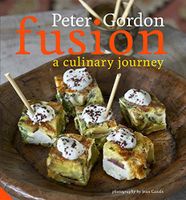Advertisement
Chillies
By Peter Gordon
Published 2010

Chilli, chile, chili - they’re all the same thing and one of my favourite ingredients. Chillies (I’ll use the British spelling) are a versatile and inspiring addition to anyone’s pantry. As a seasoning added to savoury dishes, the use of them is truly global - from flavouring and colouring Spanish chorizo, creating sometimes agonisingly spicy Sichuanese dishes and Goan vindaloos, through to Mexican guacamole, Japan’s schichimi spice mix, a red duck coconut curry from Thailand, Indonesian beef rendang, Hungarian goulash or kirmizi- biber-flavoured Turkish kofte. When I was a child the only chilli I ever experienced was either sparingly dropped onto freshly shucked oysters from a bottle of Tabasco sauce, or a pinch of cayenne pepper added to cheese scones, or ground Hungarian paprika added to minced beef. Always added very subtly, just a hint of the potential heat was what was decided was best for the family. When I moved to Australia I discovered fresh chillies, as well as exotic cuisines. I found myself eating Indian chickpea-flour-battered whole green chillies, chilli- and cumin-spiced Moroccan tagines and Tex Mex dishes such as turkey tortillas drowned in cheese and ‘chile sauce’. Young men seemed to think it a sign of their manhood as to how hot a chilli they could eat and then drown with beer (although plain yoghurt is a better mouth cooler). If you like the flavour of chillies (yes, they offer more than just heat) then you should split the chilli in half lengthways and use a small teaspoon to scrape out the seeds and the membrane that holds them in - these contain the most capsaicin, the ingredient that gives chillies their heat. Not surprisingly perhaps, it’s capsaicin that is the primary ingredient in pepper spray - used for personal defence, riot and crowd control (often controversially).


